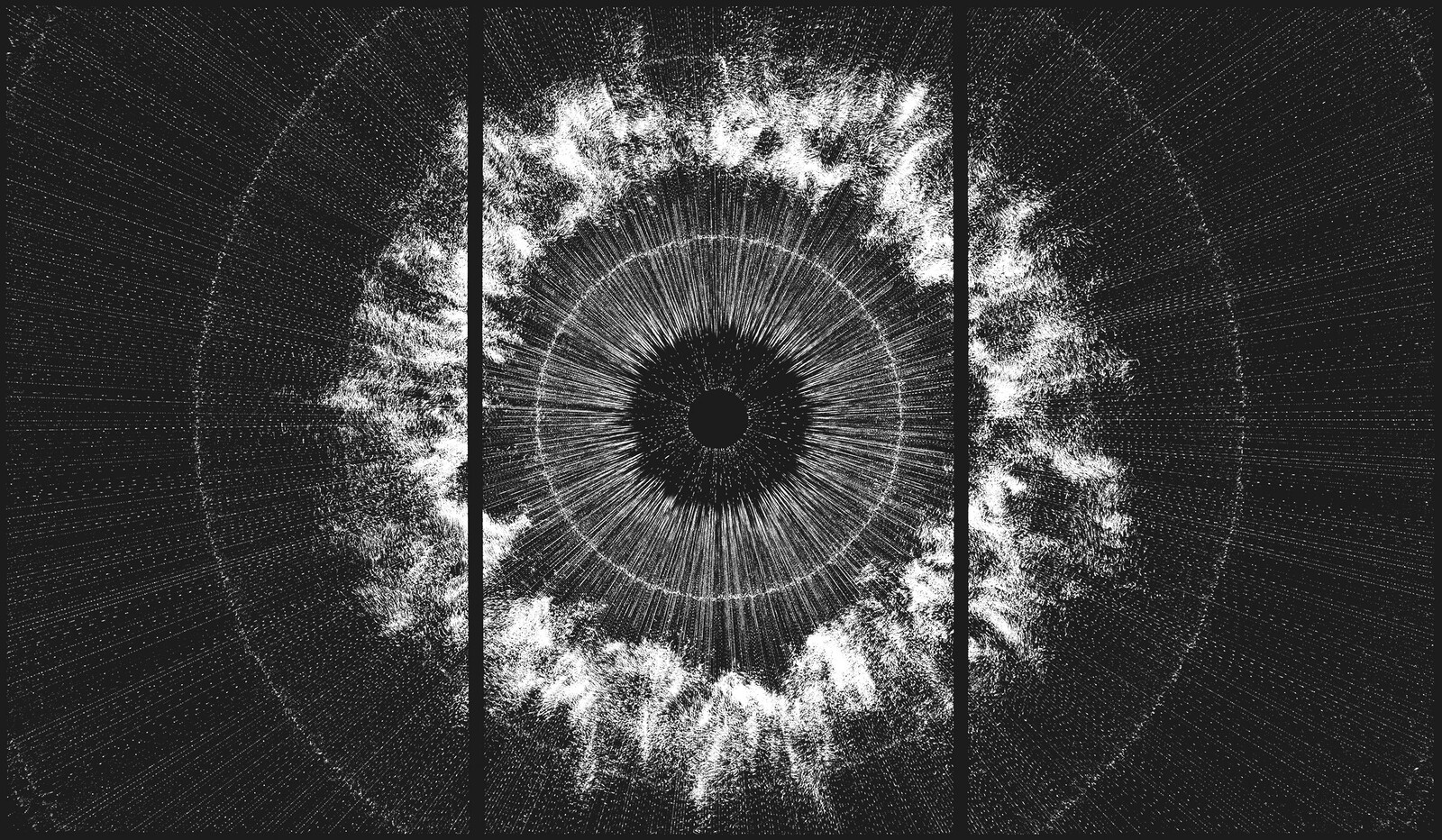A Brief History of Computing Art
September 26, 2020–January 17, 2021
798 Art District
No. 4 Jiuxianqiao Road, Chaoyang District
100015 Beijing
China
Hours: Monday–Sunday 10am–7pm
T +86 10 5780 0200
From September 26, 2020 to January 17, 2021, UCCA Center for Contemporary Art presents Immaterial/Re-material: A Brief History of Computing Art, a wide-ranging overview of the evolution of computing art from the 1960s to the present, exploring topics that span from machine-learning aesthetics to digital objecthood and technological discontent. The exhibition defines its area of focus not simply as digital art in general, but art-making that actively engages with the algorithms and generative logics that undergird the field of computing. Curator Jerome Neutres, in collaboration with UCCA curator Ara Qiu, brings together works by 29 artists and duos, from early pioneers of computing art to leading digital practitioners, as well as emerging Chinese artists. The show’s title pays tribute to Jean-François Lyotard’s groundbreaking 1985 exhibition Les Immatériaux, which conceived of a new mode of materiality that echoed advances in telecommunications technology. By exploring the broad possibilities of computing art and the philosophies underpinning it, Immaterial/Re-material aims to write a new chapter in the history of this medium, approaching it as not simply a new media form, but as an entire artistic language. The exhibition is made possible through technological support from lead AI partner Baidu, and major organizational and lending support from Fondation Guy & Myriam Ullens.
Participating artists include aaajiao (b. 1984, Xi’an), Memo Akten (b. 1975, Istanbul), Refik Anadol (b. 1985, Istanbul), Michel Bret (b. 1941, Lyon) and Edmond Couchot (b. 1932, Paris), Celyn Bricker (b. 1989, Liverpool) and Faye Lu (b. 1988, Jilin, China), Miguel Chevalier (b. 1959, Mexico City), Harold Cohen (1928-2016, London), Elias Crespin (b. 1965, Caracas), Fei Yining (b. 1990, Harbin) and Chuck Kuan (b. 1993, Qingdao), John Gerrard (b. 1974, Dublin), Ryoji Ikeda (b. 1966, Gifu, Japan), Peter Kogler (b. 1959, Innsbruck, Austria), Lin Ke (b. 1984, Wenzhou, China), Liu Wa (b. 1994, Beijing), Lu Yang (b. 1984, Shanghai), Laurent Mignonneau (b. 1967, Angoulême, France) and Christa Sommerer (b. 1964, Ohlsdorf, Austria), Manfred Mohr (b. 1938, Pforzheim, Germany), Vera Molnar (b. 1924, Budapest), Leonel Moura (b. 1948, Lisbon), Frieder Nake (b. 1938, Stuttgart, Germany), Michel Paysant (b. 1955, Bouzonville, France), Quayola (b. 1982, Rome), Alan Rath (b. 1959, Cincinnati), Casey Reas (b. 1972, Ohio, USA), Daniel Rozin (b. 1961, Jerusalem), Charles Sandison (b. 1969, Haltwhistle, United Kingdom), Leo Villareal (b. 1967, Albuquerque, USA), Wang Yuyang (b. 1979, Harbin), and Yang Yongliang (b. 1980, Shanghai).
The exhibition is arranged into four main sections, which gesture towards the progression of computing art and different approaches within the field. Opening section “Pioneers of Computing Art: The Invention of a New Palette” focuses on the work of artists who as early as the 1960s began using algorithms to create drawings and paintings. In the next section, “Generative Art: A Language for Infinity,” computing power is harnessed to create self-sustaining artworks, in which digital code is granted a kind of materiality of its own, reality is alternately simulated and distorted, and interactive design turns viewers into artistic collaborators. The next section, “AI Art-lab: When the Artist Creates Creation” explores questions of authorship, focusing on how artists actively shape and select inputs for powerful digital systems. The fresh possibilities, yet also anxieties, posed by contemporary technology are faced head-on in the final section, “Illusions and Disillusions of the Post-digital Era,” which sees some artists looking back at past art movements through a digital toolkit, and others, in particular a younger generation of Chinese artists, expressing a subtle ambivalence towards our hyper-networked world.
Immaterial/Re-material also features a special unit curated and mounted in collaboration with Baidu AI. The section features interactive works in which the presence of the viewer actively shapes each piece’s visual expression. UCCA will publish a bilingual exhibition catalogue and accompanying website featuring reproductions of each of the exhibited artworks, alongside artist interviews, and essays by exhibition curator Jerome Neutres, philosopher Yuk Hui, and artist Edmond Couchot.


